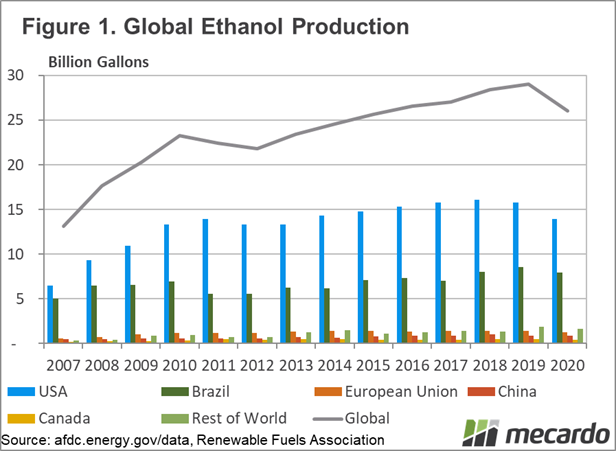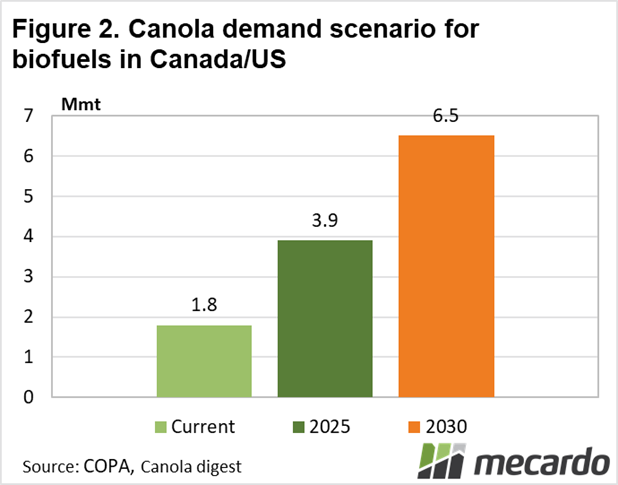The rise and rise of renewable energy sources has been at the fundamental core of agricultural commodity strength since the early 2000’s. The addition of food for fuel has seen demand outstrip supply recently and contributed to some of the tightness we are seeing in global markets. Environmental, energy and food security are all now becoming a crucial element to world economic security and stability and as such, we are seeing more investment into renewables.
Roughly 40% of the US corn crop is used in the ethanol fuel industry or roughly 53ML in 2019. The US Federal Government currently mandates that all fuel sold contains at least 10% ethanol blend. The main driver behind the introduction of ethanol blends was to reduce the carbon footprint and greenhouse gas emissions.
Canada has a renewable biodiesel or Clean Fuel Standard (CFS) of 2% in diesel which uses approximately 500kmt of canola seed. If the recommended CFS mandate of 5% was adopted, 1.3mmt of canola would be used out of an annual production of ~20mmt. Several new crush and processing plants have been commissioned in Canada with eventual capacity to process 10mmt of seed. Canada’s drought-affected crop last year was only 12.2mmt.
Another area of growth is in renewable diesel. Renewable diesel is produced via a different chemical reaction compared to biodiesel. It can use any animal or plant-based fat and is virtually chemically indistinguishable from petroleum-based diesel. It therefore can be used as a blend at any ratio or neat without performance issues. ‘Pure’ biodiesel tends to retain some of the plant-based oils characteristics such as viscosity issues in low temperatures.
Renewable diesel will still use canola or soybean oil as its main ‘feedstock’. It does however provide an excellent outlet for tallow and used cooking oil stocks.
What does it mean?
There is a fine line between environmental protection and inflationary pressures that we are currently witnessing. The benefits of a lower carbon footprint as well as securing energy supplies are coming at the expense of higher food prices and downstream industries struggling with surging costs. The demand for raw materials is only going to increase while governments mandate and subsidise renewable industries.
Have any questions or comments?
Key Points
- The rise of renewable energy sources has contributed to the upward pressure on agricultural commodities since the early 2000’s.
- Biofuels have contributed to some of the tightness we are seeing in global markets currently.
- Demand for raw materials is only going to increase while governments mandate and subsidise renewable industries.
Click on figure to expand
Click on figure to expand
Data sources: Argus, Canada Canola Growers Assoc, USDA



